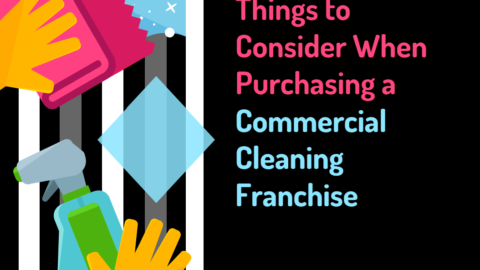How to Build Content Marketing Strategy for Startups?
Startups make an effort to advertise their business and attract more customers. As a startup, you need a content marketing strategy that works.
Table of Contents
A working strategy requires you to post relevant content that engages your audience and drives traffic to your business leading to higher sales.
79% of businesses use such content marketing strategies to generate leads. This is because content marketing has proven effective in brand visibility, business growth, building customer trust, and brand loyalty. It also helps startups attract and retain customers.
Here’s how to build content marketing strategies for startups.
-
Set Goals for Content Start-Up Marketing
Setting goals for a content marketing strategy for start up enables you to aim for a particular target. It increases your chances of success. That’s why 76% of marketers who set their goals are successful in achieving them.
Goal setting lets you know why your startup needs a content marketing strategy. Content marketing for startups goes beyond just producing content. It solves the problem of brand visibility using SEO methods. Content marketing specialists use innovative strategies and continuous experimentation to unleash success.
These experts create room for continuous improvement, innovation, and experimentation. Clearly defining content marketing goals can tell you if you are making business progress or not.
So, how important is defining your content marketing goals?

Startup Content Marketing Strategy Goals Give Content Direction
Setting content marketing goals helps to determine the type of content you should create. If you have goals, you will think about what you want and how content will enable you to achieve them.
Content marketing goals determine where and how you spend your marketing budget. The goals also help identify marketing platforms that will give you the best results.
Having well-defined goals helps you make informed decisions and achieve your marketing targets fast. Each content you create will move your business a step forward.
Provide Support to your Startup
A successful strategy has goals that are aligned with your overarching startup goals. For example, you can set your start-up goals as increasing your sales by 10% over five months.
When developing strategy, you will set goals to achieve a 10% sales increase in 5 months.
The content marketing strategy goals are likely to be lead generation and conversions. These content goals help you meet your overall startup objectives.
Determine Success
Content marketing goals help you know if your marketing campaign is successful or not. Goals make it possible to measure success and recognize failure.
Content goals also enable you to identify the right path to achieving success. You can adjust and improve your strategy if you discover that you are not on the right path to success.
Improving your strategy once you notice a problem helps you save time and money. If your content marketing strategy goals enable you to achieve success, you can continue learning and planning for future campaigns.
2. Define Your Audience
Understanding your audience helps you attract a specific group of customers and serve your active customers better. It enables you to market to the right people. For example, 57% of people aged 45 to 54 years prefer email marketing, while 52% of millennials prefer video marketing.
Another 71% of B2B customers review blog posts before buying goods or services. This shows that you need to understand your existing customers, including their likes and dislikes.
Here is what you should consider in the customer defining process.
Age, Language, and Stage in Life
Identify the age, language, and stage in the life of the customers you want to reach. Define an age range like 18 to 30 years. It is also essential to know the primary language of your target audience.
Communicating in a language your customers understand is more effective. It is also important to know where they are in life. For example, identify if your audience is single or married.
Income, Spending Pattern, and Needs
Know the pain points of your target customers and address them. This includes how much they earn and their spending patterns.
Understanding how much your target audience spends determines the goods and services you market to them.
Some customers are researchers. They spend money only after thoroughly researching a product or service. Others are impulsive buyers.
Personalities, Business Types, and Size
Understanding your target audience’s personalities enables you to create content that appeals to them. Find out if your customers engage with other brands, including the hobbies they share in common.
The type and size of the business will also determine the kind of content you share. For example, if you are targeting B2B businesses, look at the type of business and the size.
Identify if the businesses you want to attract are startups or corporates. Know if you are addressing decision-makers so that you can create the right personas.
3. Research Competitors
Researching competitors helps you understand how they appeal to audiences and drive traffic interested in their goods and services. Understanding your competitor’s content plans enables you to gain helpful insights into your content marketing strategies.
Take time and compare your marketing efforts to understand the trends. You can also discover new ways to capture audiences’ attention. So, how can competitor research help your content marketing for startups?
- Benchmarking content marketing efforts
- Finding gaps in competitors’ content marketing strategies so that you can do better and avoid mistakes.
- Helps you find fresh ideas you can include in your content marketing strategy.
Here’s how to research competitors.
Create a Competitors List for Startup Content Marketing Strategy
Make a list of direct and indirect competitors before starting a thorough analysis. Direct competitors are businesses or brands that offer the same products and services that you offer.
Indirect competitors are businesses or brands that offer different services or products but solve the same customer problems that you solve. Identify and create a list of these competitors.
Understand Competitors Goals
Understanding your competitors’ goals and targets helps you know their positioning. Find out and review your competitors’ basic information. Understand how they define themselves and what they do.
Analyze Competitors SEO
Look at your competitors’ SEO metrics and identify content gaps in your marketing strategy. Identifying these gaps helps you improve your digital content strategy.
For example, you may analyze your competitor’s content and discover they are successful in using videos. Customers engage more with their video content through shares and likes. This means your content planning can include creating more video content to engage your audience.
Review Competitors Inbound Startup Content Marketing Strategy
Look at your competitors’ websites and review the content they are creating. Reviewing their content will help you discover trends that inspire your content creation.
It will help you develop new ideas that will help improve your content marketing strategy. For example, you can look at your competitors’ content quality, length, and format. This will provide the inspiration you need to improve your content.
Take Action
After conducting competitor analysis, turn your findings into action. Gather all the information you have collected and create better and more engaging content.
Consider your business strengths and weaknesses when creating better content. Reviewing your competitors will enable you to try new content marketing for start-ups.
4. Review Existing Content
If your startup already has some published content, review them. Reviewing your published content provides insights in different ways. For example, identify the type of posts that generate the most engagement and more traffic.
Find the keywords and understand the type of content most interesting to your audience.
5. Develop Your Content Marketing Strategy for Startup
After researching and collecting all the data, plan how it will help you create a better content marketing strategy. For example, the information can help you decide on your marketing platform.
It can also help you to discover the most appealing content for your audience. For example, you will know whether to create a white paper, blog posts, infographics, or videos.
6. Plan Content Marketing Resources
Conducting content marketing research gives you many ideas. It’s important to review these ideas and decide what you can achieve with the resources available with your start-up. For example, you can create content in-house or outsource depending on your budget.
It might also be necessary to appoint someone to manage content. They can respond to questions or comments. Consider the amount of time you are willing to allocate to your content marketing strategy.

7. Schedule Content Production for Your Startup Content Marketing Strategy
Scheduling content production involves having publication dates and regularly creating fresh and engaging content.
A calendar will help you organize yourself and post content without delay. After publishing, share your content on social media platforms and with others who might find it relevant.
8. Monitor Your Content Marketing Plan
Monitor the progress of your plan. Collect and analyze data and refine your content strategy appropriately.
The marketing strategy will keep evolving, so you need to be flexible in content creation.
Key Takeaway for Content Marketing Strategy Plan for Startups
Developing a content marketing plan can help take your start-up to the next level. It’s a cycle that involves learning and growing. It’s not a one-off activity.
Content marketing strategy helps you understand your audience, business progress, and competitors. A relevant content strategy will help you connect with the right customers.
Dan has hands-on experience in writing on cybersecurity and digital marketing since 2007. He has been building teams and coaching others to foster innovation and solve real-time problems. Dan also enjoys photography and traveling.










